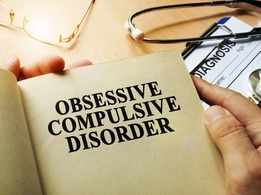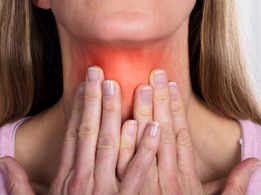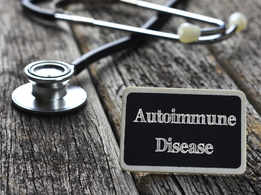01/10Signs you have already had COVID-19
)

Coronavirus continues to rapidly surge across India and the world. With the global deaths having crossed the 3-million-mark, the COVID-19 pandemic is nowhere close to coming to a near end.
By this point, with high seropositivity levels, experts believe that there is a sizable population who may have already contracted the virus one way or the other, without actually having tested positive for the viral infection. There could also be many who may have gotten infected before COVID-19 was actually declared a pandemic and brought the world to a complete standstill.
Many also believe that while the infection is increasingly turning out to be symptomatic, with unusual signs and severe complications, a lot of cases in the last year, at the peak of the pandemic's spread were asymptomatic. These people could also have some level of natural immunity against the virus.
02/10How can you check if you have already had COVID-19?
)

A prior history of testing positive for the virus is guaranteed proof of contracting the virus.
However, it could also happen that a patient could be asymptomatic and go through no symptoms. While there are antibody tests that can confirm the same, experts say there are better ways, or signs to check for the same.
If researches are to be believed, there are as many as 8 tell-tale signs that you have already had COVID without knowing about the same. Doctors also believe that some of these signs could also come up in the form of long COVID, or be present months after the initial bout of infection. Here are the broad signs to look for:
03/10Having bloodshot or red eyes
)

Red eyes and conjunctivitis are commonly seen with many viral infections. A number of optometrists have now raised growing concern that red, runny eyes with discharge could also be seen in cases of COVID-19 and be easily missed since it's not a classic sign.
What puts red eyes with COVID different from other viral infections is that in the case of COVID-19, the eye infection can happen secondary to other signs, including a fever or a headache. Hence, if you have happened to experience an eye infection or red eyes in the past with a fever, it might have been a case of COVID.
04/10Brain fog
)

COVID is known to cause memory and cognitive implications. Some even report experiencing memory loss and difficulty carrying out routine chores.
Now, as many recall, experiencing confusion, imbalance, difficulty in concentrating or simply remembering things could also be a COVID complication.
While brain fog can also arise out of other medical issues, if you recount being unable to focus sharp, remember things or do simple everyday tasks, without any cause, COVID might be a reason to suspect. Again, it may be different for everyone, but it's worth checking for.
05/10Unusual cough which sounded different
)

Cough is one of the most prominent signs of coronavirus infection since the virus is suspected to primarily attack the upper respiratory tract.
While a 'dry' cough is more common, COVID survivors also recount that the coughing bout experienced with the infection could be different than the one you usually get- be more persistent, change your voice and harder to control. It can also be a lingering symptom that could spin around for weeks or some months.
Another sign of a COVID cough? It could last likely for more than half a day, unlike a regular cough which can come and go.
06/10Experiencing a high temperature that keeps wavering
)

While fever is not a prominent sign with ALL COVID cases, those who do recount suffering from a fever with the infection usually have a high temperature that could last between 99-103 degrees Fahrenheit. The temperature could also come and go, persist for more than 4-5 days at a stretch and more likely be accompanied by chills and shivers.
If a person feels hot to touch, especially on the back or the chest, it could be taken as a sign of COVID, some experts also suggest.
07/10Sudden loss of smell, taste or impairment
)

It is now a widely-known fact that the SARS-COV-2 virus can disturb your primary olfactory senses and put off how food or certain scents smell or taste.
Now, from what is increasingly seen, some people can also suffer from a sensory impairment much before other classic COVID symptoms strike, and therefore, be unaware of their diagnosis.
Doctors now also warn patients to be on the lookout for impaired or phantom smells. If you have probably experienced distorted smell, i.e. smelled something odd and unusual with your routine foods/ scents without a prior reason, it could also be a mark of COVID.
08/10Shortness of breath
)

Breathing difficulties, shortness of breath are common complication associated with the viral infection. Suffering from this could also be a sign that you may unknowingly have had COVID. Dyspnea, as it is medically known can also be accompanied by a sudden tightness in the chest, palpitations and rapid breathing. It is a tell-tale sign that you might have had COVID before. However, it is more common in older adults and ones who may have one or more comorbidities.
09/10Gastrointestinal problems
)

There is now an emerging link of SARS-COV-2 causing COVID-19 and stomach problems. According to research, there could be a definite section of people who simply undergo gastrointestinal symptoms of COVID, such as diarrhoea, nausea, abdominal cramps, appetite loss in the absence of other symptoms and go undiagnosed. To put into numbers, as many as 48% of patients based out of China accounted for stomach pain and problems during the early weeks of the pandemic's spread. Click here to know more signs of COVID-19 impacting your digestion and gut.
10/10Tiredness and fatigue
)

Fatigue and exhaustion experienced due to COVID-19 is unlike no other, as per many COVID survivors. This has also been the basis of many case studies and researchers over the past months as scientists try and find out how, and why exactly does SARS-COV-2 cause such unnerving, excruciating fatigue.
If you recount experiencing bad fatigue which made you unable to carry out tasks, had bad body ache and pain that may have lasted for 3-4 days, it could be taken as a probable COVID-19 sign.












































































![[New!] Level 4 - 30 minute tempo fat-burning!
[New!] Level 4 - 30 minute tempo fat-burning!](https://static.toiimg.com/thumb/79327298.cms?width=147&height=86)









closecomments
SIGN IN WITH
FacebookGoogleEmail